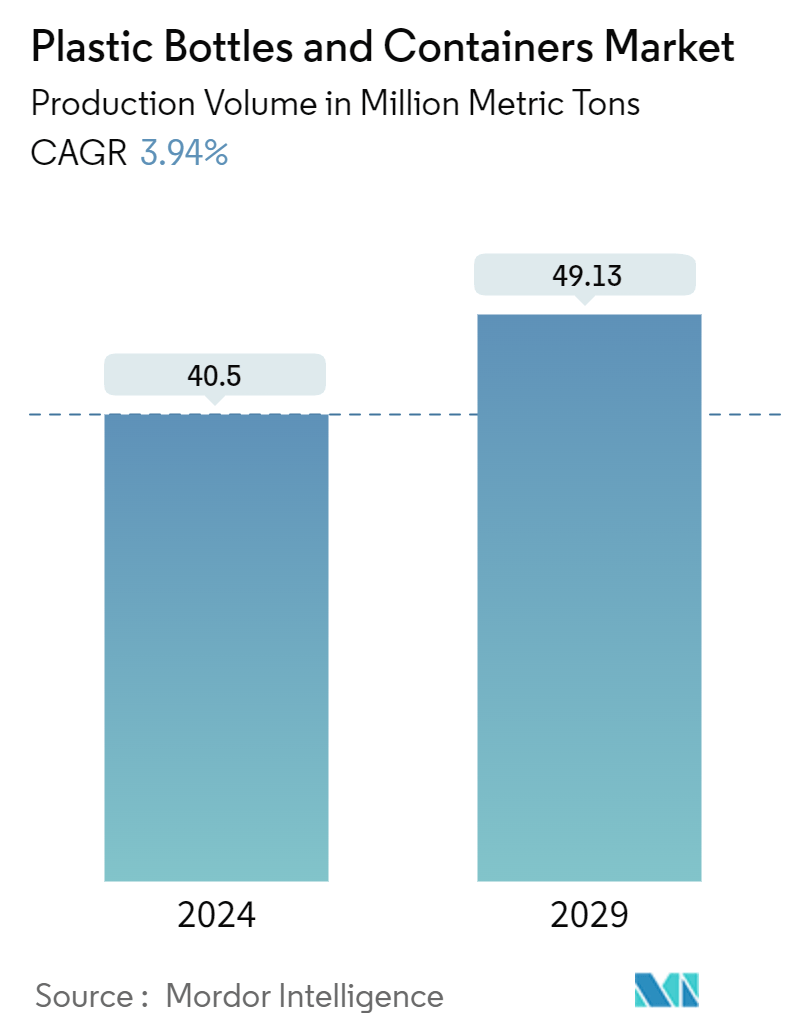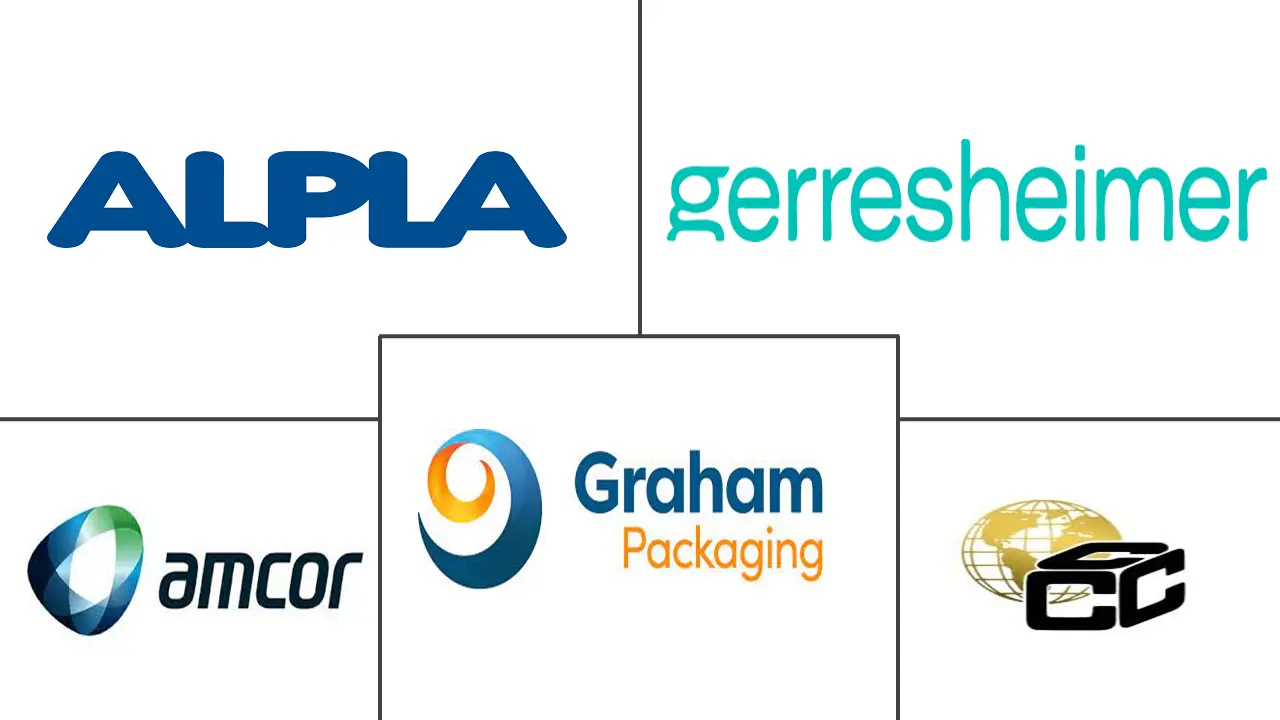Market Size of Plastic Bottles And Containers Industry

| Study Period | 2019-2029 |
| Market Volume (2024) | 40.5 Million metric tons |
| Market Volume (2029) | 49.13 Million metric tons |
| CAGR (2024 - 2029) | 3.94 % |
| Fastest Growing Market | Asia Pacific |
| Largest Market | Asia Pacific |
Major Players
*Disclaimer: Major Players sorted in no particular order |
Need a report that reflects how COVID-19 has impacted this market and its growth?
Plastic Bottles And Containers Market Analysis
The Plastic Bottles And Containers Market size in terms of production volume is expected to grow from 40.5 Million metric tons in 2024 to 49.13 Million metric tons by 2029, at a CAGR of 3.94% during the forecast period (2024-2029).
Plastic bottles and containers that are made of polyethylene terephthalate, polypropylene, polyethylene, etc., are widely used as the material is lightweight and unbreakable, making it easier to handle. Even manufacturers prefer to use plastic packaging, owing to the lower cost of production. The cost-effective nature and dependence on packaged, processed food and various beverages are anticipated to influence the plastic bottles and containers market during the forecast period.
• Plastics have been increasingly adopted due to their lightweight properties because lightweight plastic packaging can preserve energy in transporting packed goods and lower emissions.
• The value chain of the plastic bottles and containers market is poised for notable developments driven by strategic approaches. These strategic moves aim to enhance control over distribution, supply chains, and production processes, indicating a dynamic response to market demands and a pursuit of sustainable growth. The industry may witness increased consolidation through horizontal integration, fostering economies of scale and bolstering competitiveness.
• A surge in adopting eco-friendly materials, such as bioplastics and recycled content, is poised to reshape the industry landscape, aligning with circular economy initiatives and global environmental goals.
• Technological advancements will redefine packaging functionality, with smart features like QR codes for traceability and shelf-life indicators becoming prevalent. Anti-microbial properties integrated into plastic packaging will address heightened hygiene concerns, particularly in pharmaceutical bottles.
• With growing concerns about plastic pollution, manufacturers and consumers are also inclining themselves toward other packaging materials that offer environment-friendly properties. The consumption of aluminum and glass might witness rising adoption rates owing to their eco-friendly nature and high recyclability.
• The plastic manufacturing industry depends on the cost and availability of raw materials, including crude oil and natural gas. Any changes in these prices can impact the industry's profitability and sustainability. According to Lindum Packaging Limited, oil is the raw material used for a broad range of packaging materials. So, when there is an upsurge in demand, a problem with the supply chain or increased prices is where packaging manufacturers will face difficulties.
